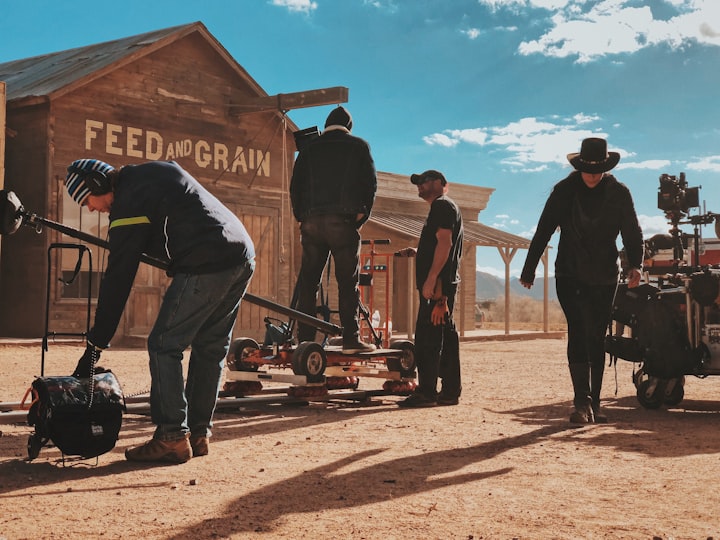
In the ever-evolving realm of cinema, where storytelling meets technology, the landscape has undergone a transformative journey. From the silent era to the digital age, film has consistently adapted to societal changes, technological advancements, and artistic innovations. As we navigate the current trends in cinema, it's evident that the medium continues to push boundaries, captivating audiences with new narratives, visual techniques, and immersive experiences.
1. The Rise of Streaming Services:
The advent of streaming services has fundamentally altered the way we consume films. Platforms like Netflix, Hulu, and Amazon Prime have democratized access to content, allowing viewers to explore a vast library of films at their convenience. This shift has not only disrupted traditional distribution models but has also given rise to a golden age of television, with high-quality series often rivaling the cinematic experience.
The convenience of on-demand streaming has led to changes in audience expectations. Binge-watching has become a cultural phenomenon, influencing how stories are crafted and paced. Filmmakers are now challenged to create narratives that not only captivate audiences from one episode to the next but also leave a lasting impression in a crowded digital landscape.
2. Diversity and Inclusion:
The call for diversity and inclusion in film has gained momentum in recent years, pushing the industry to reflect the richness of human experiences. Filmmakers are increasingly exploring stories that represent a more diverse range of voices, shedding light on narratives that have historically been marginalized or overlooked.
From the success of films like "Parasite" breaking language barriers to the celebration of inclusivity in projects like "Moonlight," the industry is slowly but surely embracing a more representative storytelling approach. This trend not only reflects a commitment to social progress but also resonates with audiences seeking narratives that mirror the complexity of the real world.
3. Technological Advancements:
Advancements in technology have always been at the forefront of cinematic evolution. The transition from black and white to color, the introduction of sound, and the shift from celluloid to digital—all these milestones have shaped the visual language of film. In the current landscape, technological innovations continue to redefine the cinematic experience.
Virtual Reality (VR) and Augmented Reality (AR) are emerging as transformative tools for filmmakers. VR allows audiences to step into the narrative, offering an immersive experience that transcends traditional storytelling boundaries. Filmmakers are experimenting with VR to create interactive narratives, providing viewers with agency within the story.
Similarly, advancements in computer-generated imagery (CGI) have opened up new possibilities for visual storytelling. From creating realistic worlds in fantasy epics to de-aging actors for flashbacks, CGI has become an integral part of the filmmaker's toolkit. This technology enables directors to bring even the most fantastical visions to life on the silver screen.
4. Revival of Practical Effects:
While CGI has revolutionized filmmaking, there's also a growing trend toward a return to practical effects. Filmmakers are rediscovering the artistry of practical effects, utilizing techniques such as animatronics, puppetry, and traditional prosthetics to create visceral and tangible experiences for the audience.
The revival of practical effects speaks to a desire for authenticity in storytelling. Audiences, in an era saturated with digital visuals, appreciate the craftsmanship and tangible nature of practical effects. Filmmakers like Christopher Nolan, known for his commitment to practical filmmaking, have demonstrated that the marriage of practical and digital effects can yield stunning and memorable cinematic moments.
5. Experimental Storytelling Formats:
The boundaries of traditional storytelling are continually being pushed as filmmakers experiment with non-linear narratives, multiple perspectives, and unconventional structures. Films like "Memento" and "Eternal Sunshine of the Spotless Mind" have demonstrated the power of non-linear storytelling, challenging audiences to engage with narratives in new and thought-provoking ways.
Additionally, the rise of anthology formats and interconnected cinematic universes has reshaped how stories are told. Franchises like the Marvel Cinematic Universe (MCU) have redefined the concept of a film series, creating a shared universe where characters and narratives seamlessly intersect across multiple films. This trend not only keeps audiences invested in long-term storytelling but also opens up opportunities for innovative narrative approaches.
6. Environmental Consciousness in Filmmaking:
In an era of heightened environmental awareness, filmmakers are increasingly adopting sustainable practices in their craft. From minimizing on-set waste to using eco-friendly materials for sets, the industry is acknowledging its environmental impact and taking steps to reduce its carbon footprint.
This commitment to sustainability extends beyond on-set practices to the themes explored in films. Environmental issues, climate change, and ecological concerns are becoming central themes in storytelling. Films like "An Inconvenient Truth" and "Okja" not only entertain but also provoke reflection on our relationship with the planet.
Conclusion:
As we traverse the current trends in cinema, it becomes clear that the evolution of film is a dynamic and ever-shifting journey. Streaming services have democratized access, diversity and inclusion are reshaping narratives, and technological advancements are continually expanding the possibilities of visual storytelling. Filmmakers, with their creative vision and storytelling prowess, are navigating this evolving landscape, pushing boundaries and challenging conventions. The future of cinema holds the promise of even more innovation, as storytellers continue to captivate audiences with narratives that reflect the diverse, interconnected, and technologically advanced world we live in.





Comments
There are no comments for this story
Be the first to respond and start the conversation.